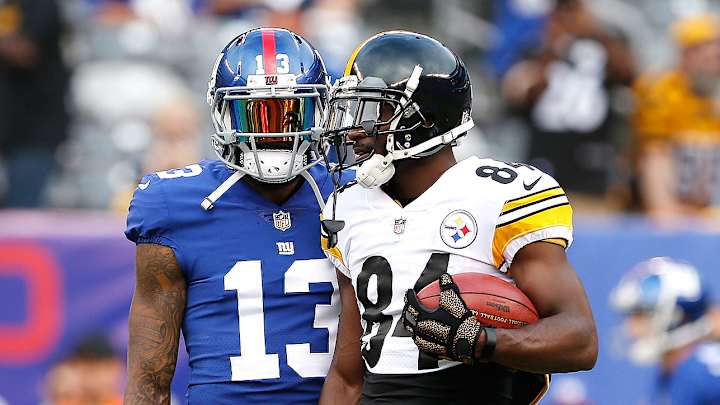Strategy and Advice for Picking Receivers in DFS Contests

It’s DFS Week at SI.com. All week, we and our 4for4 colleagues will help provide you with a foundation for DFS success this season. In this installment, 4for4’s Chris Raybon gives you his best practices for making lineup decisions at wide receiver.
Wide receiver is the most important position to get right in DFS. Not only do you have to pick more of them than any other position, but there are more options to choose from, too. Below are five tips to ensure you’re making the best wide receiver picks for your DFS lineups.
1. Properly weigh past statistics
Early in the season, year-to-date targets best predict future fantasy points. Fantasy points aren't as telling early on because they haven't had a chance to stabilize. But after five or six games, past fantasy points become the best predictor of future fantasy points.
Targets alone can mislead you since certain types of targets are worth more than others. The deeper downfield a target is, the greater fantasy scoring expectation it has; targets close to the end zone are more likely to produce touchdowns than those further away; and targets from an elite quarterback are going to be worth more than those from a lesser signal caller.
For example, Michael Thomas was a top-10 fantasy wide receiver in 2016 despite being 24th in targets (121). Playing with Drew Brees, and being a top red-zone option made Thomas's targets more valuable than most. By contrast, DeAndre Hopkins was in the top 10 in targets, but struggled in fantasy due to quarterback play.
2. Target different prototypes based on site scoring format
Wide receivers that get short targets benefit more in full point-per-reception scoring (PPR). The shorter a target, the easier it usually is to catch, resulting in more receptions. This leads to increased weekly consistency, since receptions are the most stable week-to-week stat.
On half-PPR sites, deep targets and red-zone targets are more important. With the value of receptions cut in half, yardage and touchdowns, especially the latter, drive fantasy scoring for receivers.
The best way to maximize your touchdown upside is by picking wide receivers who get a steady diet of red-zone targets. Targeting high-scoring games is also more important in a half-PPR format.
Strategy and Advice for Picking a DFS Quarterback
3. Don't be misled by a defense’s fantasy points allowed
Picking a wide receiver that will face a defense that surrenders a lot of points to wide receivers makes sense, right? Not exactly. Raw fantasy points allowed data is noisy because strength of schedule plays such a big part. Even a stout pass defense like the 2016 Seahawks gave up 100-plus yards and touchdowns to Julio Jones and Mike Evans. Using a metric like 4for4's schedule-adjusted fantasy points allowed will be more reliable.
Even then, you still want to take individual matchups into account. Some defenses will be strong or weak against a particular type of receiver. For example, the Cardinals were a bottom-six defense against wide receivers overall, but did well against No. 1s thanks to shutdown cornerback Patrick Peterson.
4. Pay up in tournaments
Wide receivers can rack up yardage in big chunks, giving them a ton of upside, but also making them tough to predict. The most expensive wide receivers will tend to be the most predictable and also have the most upside from week to week.
Paying up at wide receiver is what winning lineups in the DraftKings Millionaire Maker and FanDuel Sunday Million tournaments have done. The average WR1 in first-place lineups for each respective tournament has been the lineup’s most expensive player. And the average WR2 in first-place lineups has been significantly more expensive than the average RB2.
Strategy and Advice for Picking your DFS Running Backs
5. Stack with quarterback in tournaments
Almost every one of the players in your lineup needs to hit for you to have a chance to take down a tournament. If your quarterback hits, one of his receivers will likely hit, as well. A quarterback's go-to receiver has by far the greatest odds of being the one who ends up coming through on the other end of his passes.
That said, be careful not to overspend on a stack. To take full advantage of the correlation, it's best if only one player in your stack costs top dollar. You want to let the correlation between an expensive and cheaper player result in expensive production from both. That way, you still have salary left over to spend on more costly players, and, in a perfect world, producers, elsewhere.
